This is the latest update on my post here on Transport in the time of the COVID-19 crisis. The previous update can be seen here. Below is a version of my presentation which you can see from 1.42 on You Tube here
This may seem dramatic, but we are now seeing the best – and only – window of opportunity for sustainable/active travel in the UK to really advance during the last few decades. As explained below, this is dependent onlocal authorities in the UK properly providing for walking and cycling in accordance with Government requirements. There is a lot of work to be done in persuading many that this really has to be done – for air quality, congestion reduction, any serious prospect of addressing climate change, public health and the local environment.
The Main News:
The key development is a letter from a Deputy Director at the Department for Transport, Rupert Furness. “Emergency Active Travel Funding Indicative Allocations” The key element in it is this paragraph:
“The amounts are only indicative. To receive any money under this or future tranches, you will need to show us that you have swift and meaningful plans to reallocate road space to cyclists and pedestrians, including on strategic corridors. Anything that does not meaningfully alter the status quo on the road will not be funded” (my emphasis).
This money is for temporary walking and cycling schemes during the Covid-19 crisis and beyond. It’s worth noting that the Department for Transport has also announced £1 billion for a Trans-Pennine road building scheme and is not pulling back from its £27 billion UK road building programme (indeed, it is suggested this may receive far more money).
Nevertheless, it is astonishing and welcome to see such forthright language.
Here are some comments on the Furness letter:
• Carlton Reid “I can reveal that Andrew Gilligan’s fingerprints are all over the hard-hitting letter to local authorities”.
• Simon Munk
• Mark Treasure
• Robert Huxford of the Urban Design Group
Chris Boardman’s editorial in The Times.
(Click on text to enlarge)
Here’s my take on it:
1. There is £225 million (£25m for London) + £25m for bike repair schemes + £55m for London already. Not enough especially outside London, but with temporary materials could make a difference. So £200 million for infrastructure in England outside London, with £80 million for London.
2. Priority is filtered permeability (Low Traffic Neighbourhoods, point closures) as these are easy and cheap to achieve, then (separated) cycle lanes using the (cheaper than concrete/stone) temporary materials.
3. That last sentence in the paragraph above…
4. Work has to be bid for swiftly (before June 5th), and finished within 8 weeks. Speed, in both bidding and completion, is of the essence,
5. It’s 2 tranche, with non-achievers not getting more money.
6. The 2nd tranche refers to more “permanent measures to cement cycling and walking habits.” It’s unclear if this means non-temporary materials.
8. Funding can also be for existing plans (those that have been through consultation and other processes).
…so:
9. There will be a lot to look out for this summer: from effective, less so, through to going-through-the-motions ineffective (or worse) measures.
As speed is critical, it’s important to let Council leaders know that you want this, so you should be informing them accordingly. (Here’s how in London). A lot of Councils are inherently anti-cycling and walking and won’t put in viable bids. This means that money (the “indicative” part applies here) which would have been available to them could go to those Councils that are doing the right thing. It could also mean that the Government – possibly TfL in London and other Metropolitan Authorities’ Transport in the rest of the UK – could be charged with highways works on those recalcitrant local authorities.
Also:
From 22nd June mandatory cycle lanes around England can be enforced by council using cameras.Mark Strong has commented: “Small step in right direction. New powers only apply where vehicles are parked or stopped in mandatory lanes with waiting or loading restrictions . They *still* don’t deliver camera enforcement of *moving traffic* offences outside London!”
Scotland now has £30 million, increased from original £10 million, for pop-ups.
Developments in the UK
Since the last update:
Belfast: Here’s a (actually one-way) cycle lane on the Sydenham Bypass outside Belfast which could do with some form of physical separation beyond paint.
Sydenham Bypass
Cambridge: Same problem here – Advisory Cycle Lanes don’t stop the car parking!
Girton Road ACLs
South Gloucestershire: This WAS a nice facility on A4174, Stoke Gifford, Bristol Lane coned off – but was due to be removed as of June 2.
It’s not there now
Glasgow: To be considered on 4th June. The plans include 25 miles of city centre for pedestrians and cyclists
Kent County Council Gary Outram commented “Broad, vague and looking to encourage rather than enable. Attempts to get more detail are currently like trying to nail jelly to a wall.”
Leicester : published May 29th See the first presentation here in this Landor Links webinar
Newcastle UPDATE 04/06: This pop-up cycle lane went in last week . It goes past the city centre hospital.
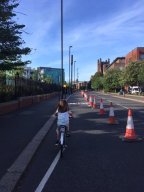 Newcastle pop-up lane
Newcastle pop-up lane
Southampton: Details here
Sheffield UPDATE (announced 4th June https://sheffieldcityregion.org.uk/sheffield-city-region-announces-plans-for-1000km-of-walking-and-cycling-routes/)
Trafford: . 7 mile long bike lane. And take a look at this:
A 56
Plymouth/Bristol/Edinburgh: Not much seems to be happening – if anything
Greater Manchester Here’s a nice indication of what’s been happening in lockdown:
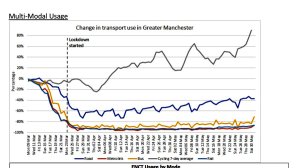 Look at the top line…
Look at the top line…
LONDON
We still haven’t heard about Cycle Training: there are plenty of instructors about who can deliver socially distanced one-to-one training for the beginners and returners to cycling. More Santander hire bicycles will be provided (announced on June 2nd), and a limit of 20 people on double decker buses illustrates the need for more provision for the cycling and walking alternative.
UPDATE: 1.am 4th June
This new announcement doesn’t have the details of these schemes. We”ll keep you posted, either in this post or next week’s.
In the Boroughs:
LB Camden See the very good campaigning page here and note the counts:
“Record numbers are still cycling in Camden, despite rising traffic levels. Up slightly on pre-COVID levels during week, massively up on weekends. Hourly profiles look very different – big peak-hour travel effect pre-Covid, barely any now.”.
LB Ealing A4020 Uxbridge Road eastbound ( same treatment is going in on some westbound sections). Note cylinders wider than old ACLs, solid white line to go in under them).
Leader of Ealing Council Cllr. Julian Bell
Bi-directional next to A40. It stops at RB Kensington and Chelsea.
and some more wands (“light segregation”) to go in on a line wider than the old ACL line here:
Greenford Road northbound
LB Hackney Queensbridge Road cycle track was due to go in before COVID-19: filtering has gone in as a crisis measure.
Queensbridge Road before and after – note removal of motor vehicle parking spaces
How do you stop motor vehicles (apart from emergency vehicles) entering filtered areas (often called Low Traffic Neighbourhoods or LTNs)? One way is moveable bollards (with hinges and locks which emergency services can undo). Otherwise you need enforcement through cameras as here. (Note the “flying motorcycle” sign: it is needed where a No Entry except cycles can’t be used because of the need for emergency vehicle access).
Barnabas Road Modal Filter
LB Hammersmith and Fulham: A whole lane has been provided for cyclists on the Hammersmith Broadway gyratory system.
(Photo Edward Seaton)
In King Street (another infamous gyratory system) the contraflow lane east of Leamore Street here has been augmented by more temporary barriers, which lead to a new contraflow here:
LB Haringey Nice campaigning thread here . The output from the Council has not, so far, been evident.
LB Hounslow Experimental traffic orders at 10 locations, using ANPR technology to monitor closures. Residents register their number plates and deliveries have limited time access. Some bus lane hours to 24/7.
LB Islington The Council tweeted that it had put in – new cycle symbols on the tarmac! This was remarked upon accordingly:
Renewing road markings is standard planned works, it is not however appropriate or relevent to suggest it is contributing to #streetspace movement on your social media platforms. (@deekinstow)
To be fair LB Islington is doing other things for cycling and walking.
LB Lambeth continues with its impressive push for Active Travel with a map here for locals to add comments to. It has also pushed ahead with a pre-COVID-19 programmed scheme on Baylis Road.
Baylis Road: Before and after
LB Richmond upon Thames Kew Road. This was discussed at length on the #ideaswithbeers session:
Kew Road
While the width taken by the barriers is no more than the previous cycle lane, it has to be noted that: The road is a busy bus route and narrow with limited space to take if smooth running of buses is to continue. Car parking has been removed. Also the mandatory cycle lane was only in operation for a couple of hours each day. So overall there is distinct improvement for cyclists, and if the barriers are replaced by light segregation (e.g. wands or cylinders) then cyclists will be able to overtake others or avoid obstacles in the lane.
City of Westminster Firing London’s economic engine 27th May . Oh dear. Despite being described by Will Norman as “Ambitious” this is, well, not ambitious. It doesn’t even specifiy one Low Traffic Neighbourhood in its programme. Below we can see work on Great Portland Street – but it appears to be Advisory Cycle Lanes, rather than the separation specified in the DfT letter.
ACLs in Gt. Portland St
And also:
Don’t forget the Transport Action Network campaign against the huge road building programme.
Locally you can put information/suggestions in on this web site.
And here is a nice cartoon from Dave Walker to remind you that it is, indeed, Decision Time!
Dr Robert Davis, Chair, Road Danger Reduction Forum, 3rd June 2020.
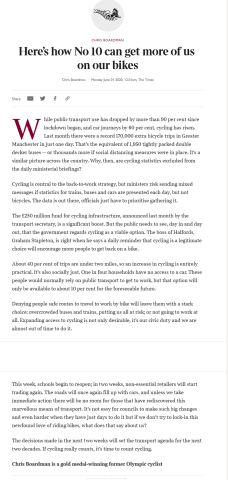
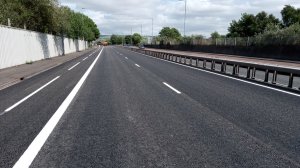

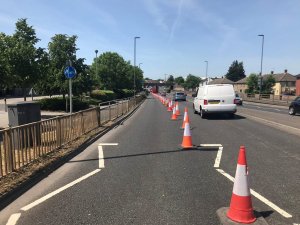
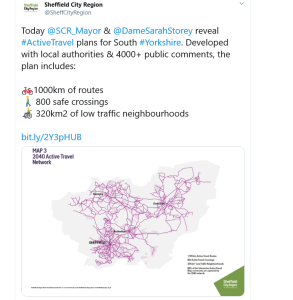

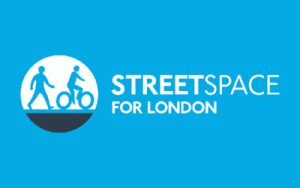
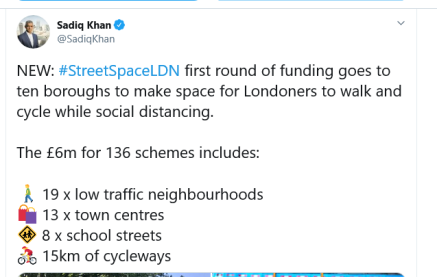

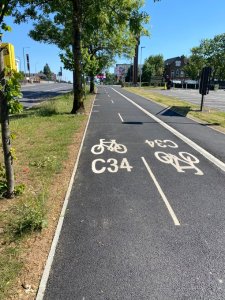
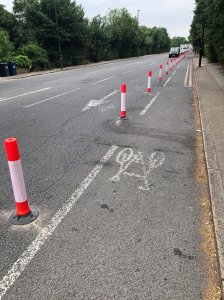
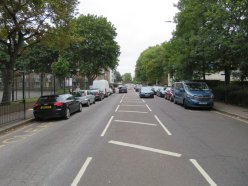
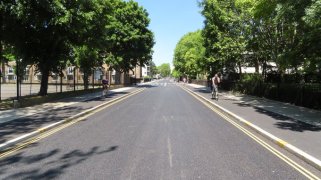
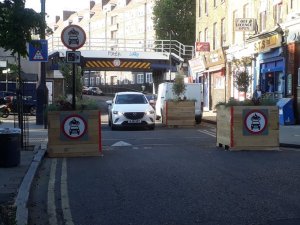
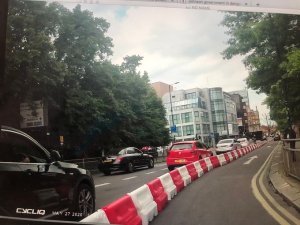
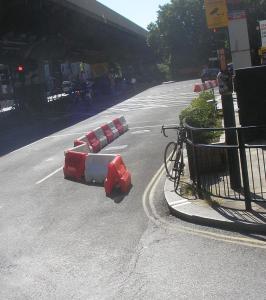
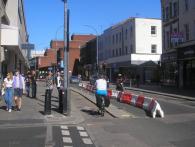

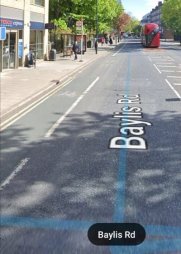
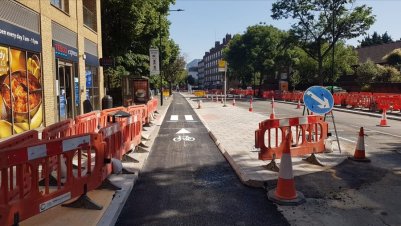
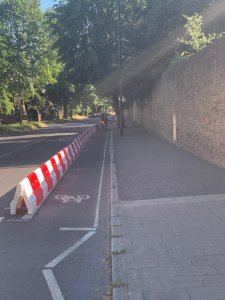
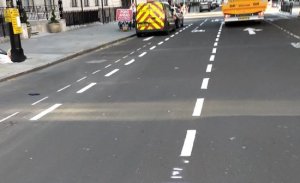
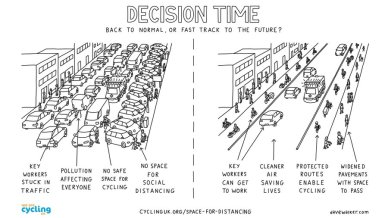
When did you stop campaigning for road danger reduction and start to become just another advocate of segregated cycle facilitates?
Many of your photos would qualify as dangerous rubbish in the best of times (and fail, or barley meet, existing standards for such), but pretty much all of them endanger cyclists and pedestrians during the pandemic by forcing us to ride and walk in a barrow strip of road actively preventing social distancing.
Take a closer look at the photos and estimate the width available. Ask yourself:
For cycle lanes: Could a cyclist ride within that lane keeping 2m clear of a pedestrian standing on the edge of the pavement? (That needs 3m for paint or 3.5m between the kerb and the barrier).
For pavements: Is there enough width on the pavement for two pedestrians to pass each other safely? (That needs 3.2m – otherwise pedestrians need to step into the carriageway or cycleway)
For 2-way cycleways: Is it wide enough for 2 cyclists to pass each other keeping 2m apart? (That needs 4.5m if it is kerbed – more if it is barriered).
The only paces that seem to be taking this seriously are London – with its large car exclusion zone – and Manchester -with the pedestrianisation of Deansgate and reallocation of cyclways to create wider pavements.
I do think you have to read through the comments on the pieces of infrastructure in each case – we are certainly not “just another advocate for segregated cycle infrastructure”. If you read through this and previous posts the issues about excessively narrow cycle lanes have been referred to time and time again, also in the presentations now on You Tube.
Similarly facilitating pedestrian social distancing has been a key point made.
Also, cycling 2 metres away from a pedestrian at the kerb (or another cyclist) is not always going to be possible. And yes, if you read the posts and listen to the updates weekly on #ideaswithbeers, you will see that reference to London and Manchester is key. I’m glad there is a car-free zone in central London – although, as I have said before, it isn’t actually all that big in terms of the amount of road space in London and a lot more needs to be done here in London as well as elsewhere.
Pingback: Covid-19: What is the Emergency Active Travel Fund and what might Nottingham and Notts do with it? – Pedals
Pingback: Don’t let the Covid crisis go to waste | Vision Zero London